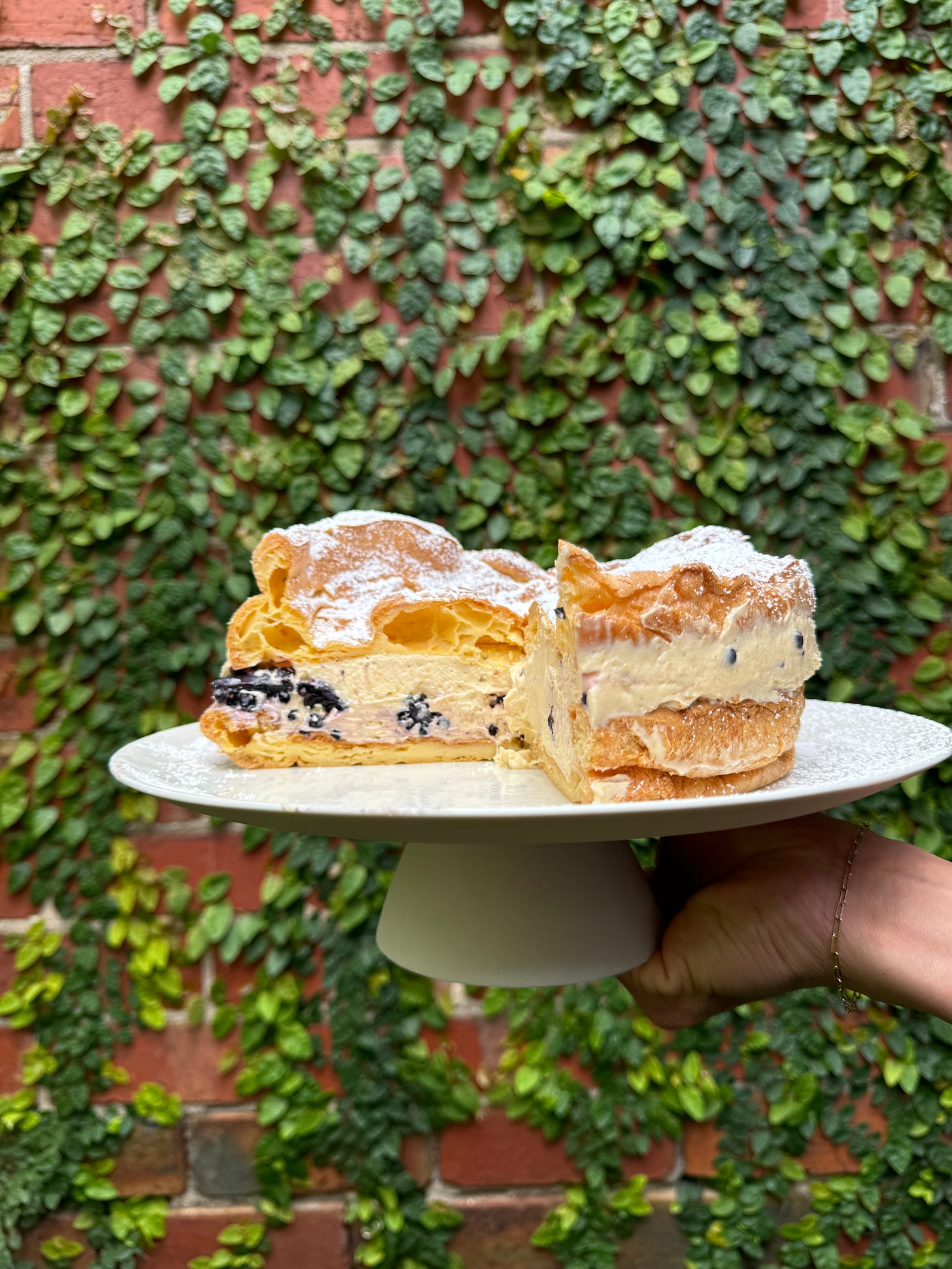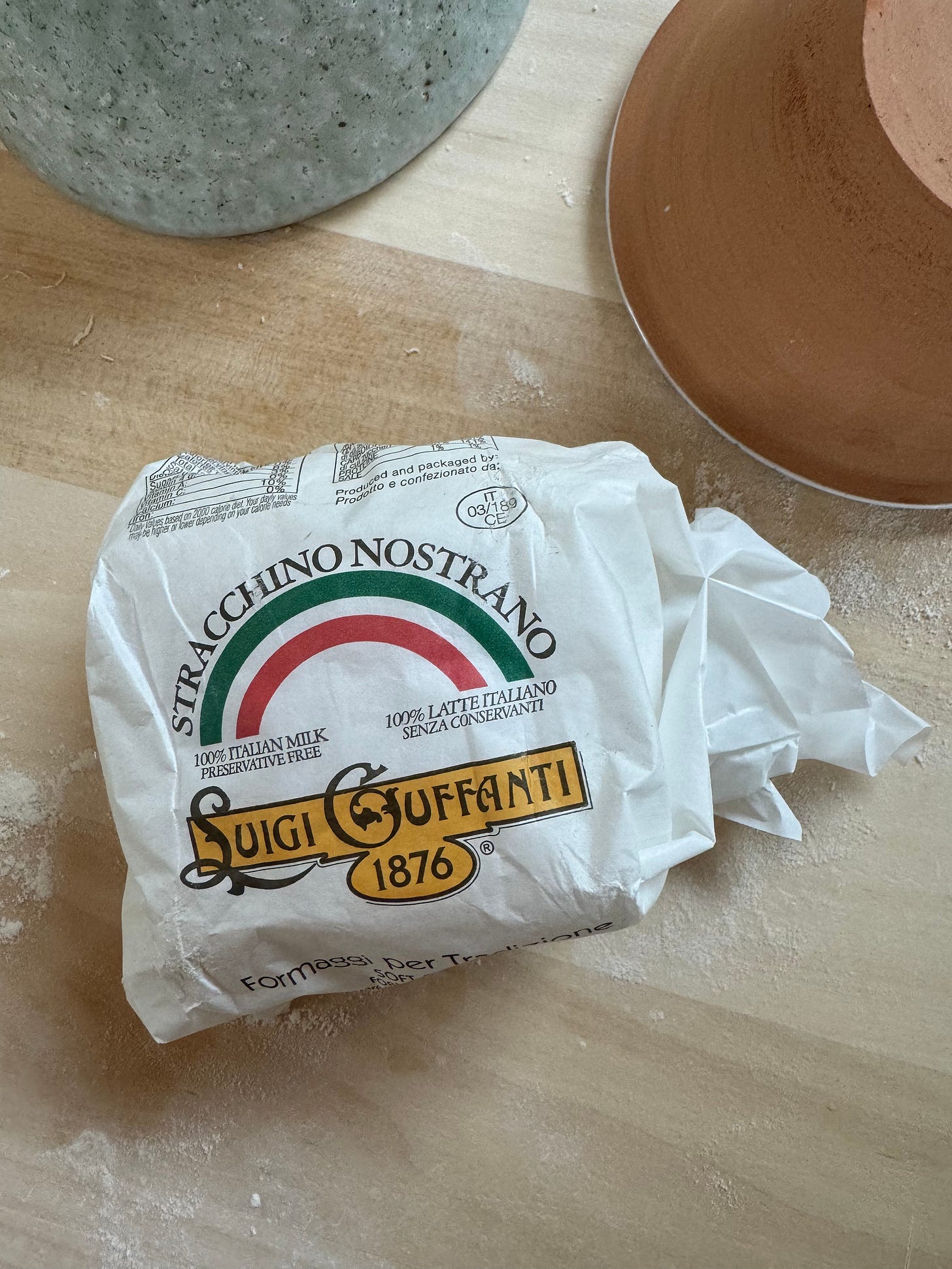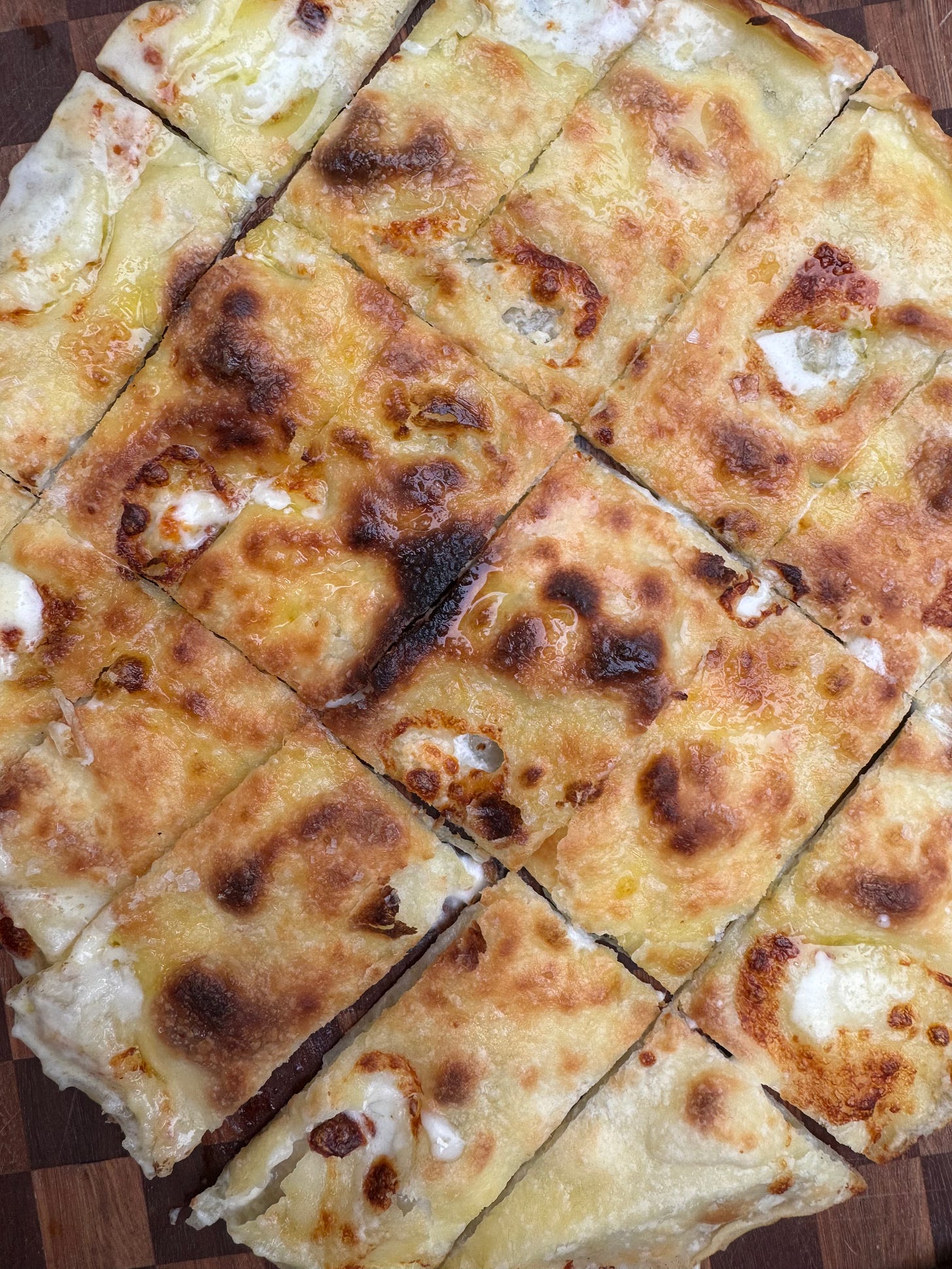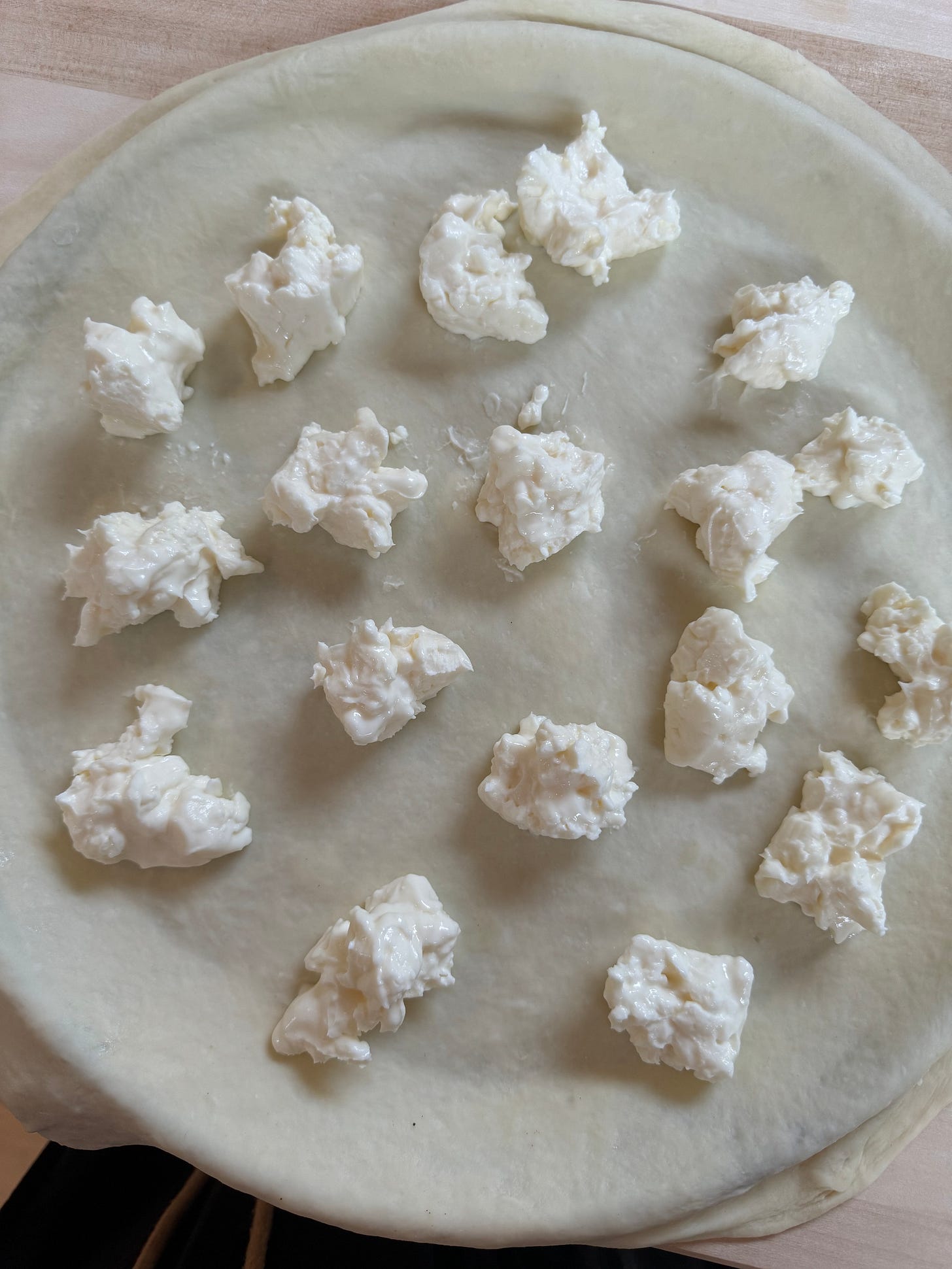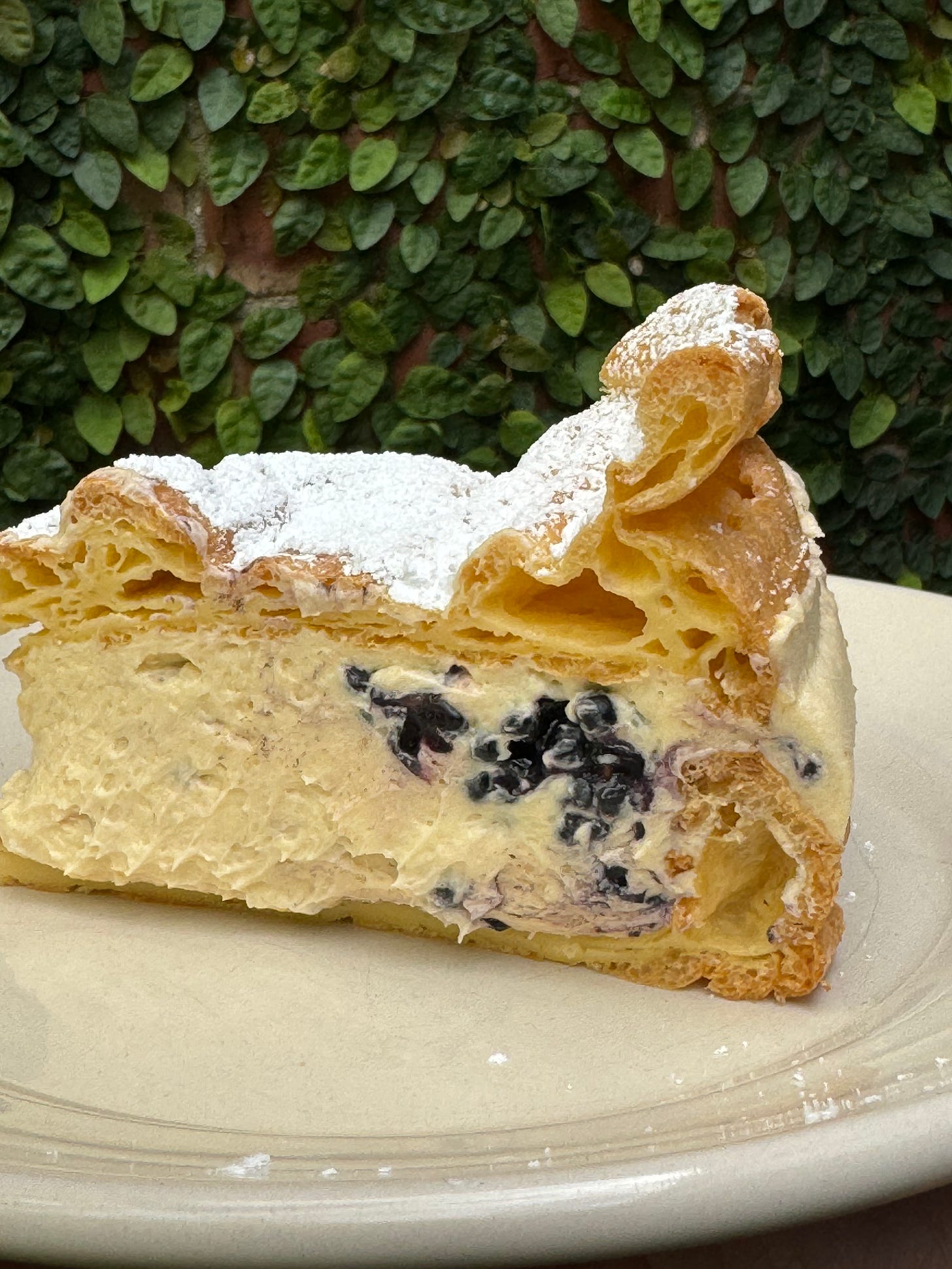Thank you for loving my new cookbook, GOOD COOKING EVERY DAY so much!! It’s been a few weeks of it out in the world and the response has been so amazing. So so grateful!
Today’s recipe for my paid subscriber community is for a Karpatka or PolishCarpathian Mountain cake! Two layers of choux pastry sandwiched between thick custard and finally dusted with icing sugar to look like snow-capped mountains.
There are a few steps, but I break it down for you and it is truly so worth it!!
Last week whilst on a walk I spotted an overhanging fig tree and gathered a few fig leaves. When steeped in milk, they provide a beautiful perfume to custard – figgy, yes, but also notes of vanilla and coconut. So for my Karpakta, I steeped the fig leaves into the milk to make a classic crème pâtissière (pastry cream), then added it to some whipped butter and sugar, which turns it into a crème mousseline. It’s thick and rich and stable enough for this cake. Some blackberries mixed into to the creme mousseline add some tartness and colour.
If you can find some young fig leaves, it is well worth using. But if not, a vanilla bean will be wonderful too.
On the weekend, I also made a Focaccia di Recco, sometimes called Focaccia col formaggio. Rather than it being a tall fluffy focaccia, Focaccia di Recco is thin and crispy and is stuffed with stracchino / crescenza, a beautiful mild and slightly acidic cheese. A good Italian deli or cheesemonger should have it. This delicious focaccia hails from Recco in Liguria and the recipe can easily be doubled. I have been quite generous with the stracchino, but you could reduce the amount slightly to stretch it further.
Enjoy!!
Julia xx
Focaccia di Recco
Serves 6 as a snack
250 g 00 flour, plus extra for dusting
5 g fine sea salt
150 ml water
2 tbsp extra virgin olive oil, plus for drizzling
300 g Stracchino cheese
Flaky sea salt, for sprinkling
In a large bowl, combine the flour, salt, water and olive oil. Mix with your hands or a wooden spoon until shaggy. Transfer to a floured bench and knead until smooth and no longer sticky, adding more flour as needed.
Divide the dough into two pieces, one slightly larger than the other. Form the dough into smooth balls by cupping the dough and using the friction of the bench to help form a taught ball.
Cover well and allow to rest for 1 hour. I cover my dough with upturned bowls, but a tea towel or container works well too.
Preheat the oven to 250 C or as high as your oven will go.
Grease a large round tray (I use a 30cm copper tray) with olive oil and set aside.
Roll the larger ball on a lightly floured surface to a flat round then use your hands to lift and thin out the dough. You want it to be as thin as possible without tearing. Drape the dough onto the base, leaving excess overhang.
Dot the dough with tablespoon amounts of the stracchino.
Repeat the rolling and stretching with the second ball and drape over the stracchino, again letting excess overhang. Now pinch holes in the dough, about 8 of them, to allow steam to release. Use a rolling pin to roll over the edges of the tray to cut the excess dough and ensure the edges have sealed together. Drizzle with plenty of extra olive oil and sprinkle a little salt.
Bake in the preheated oven for 15 minutes or until cooked through and golden. I like to turn on the grill for the last minute or two to help make the top golden. Drizzle with more oil, transfer to a serving board and cut into pieces. Eat immediately.
Karpatka
Serves 8
Keep reading with a 7-day free trial
Subscribe to In My Kitchen to keep reading this post and get 7 days of free access to the full post archives.




